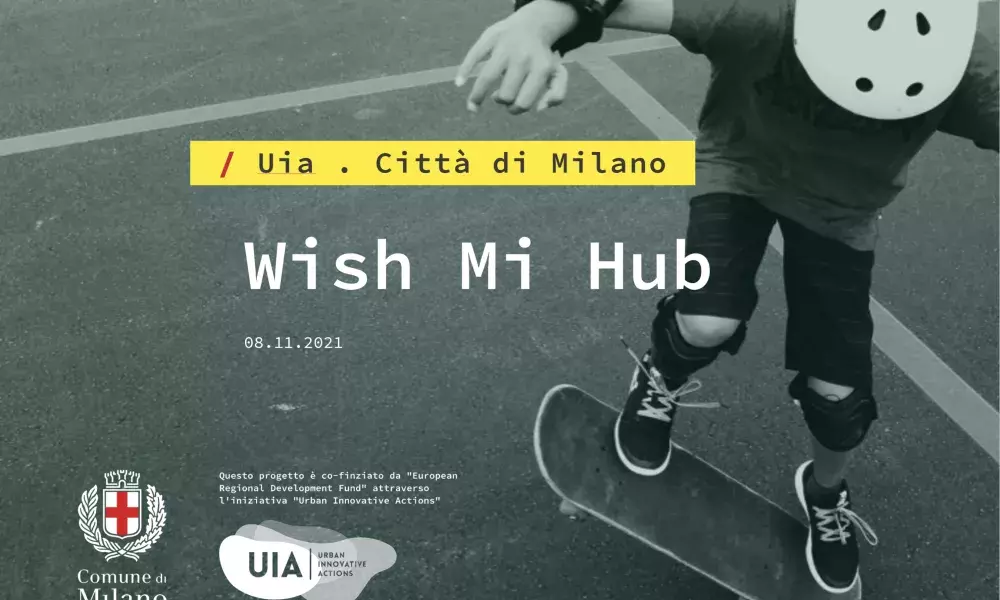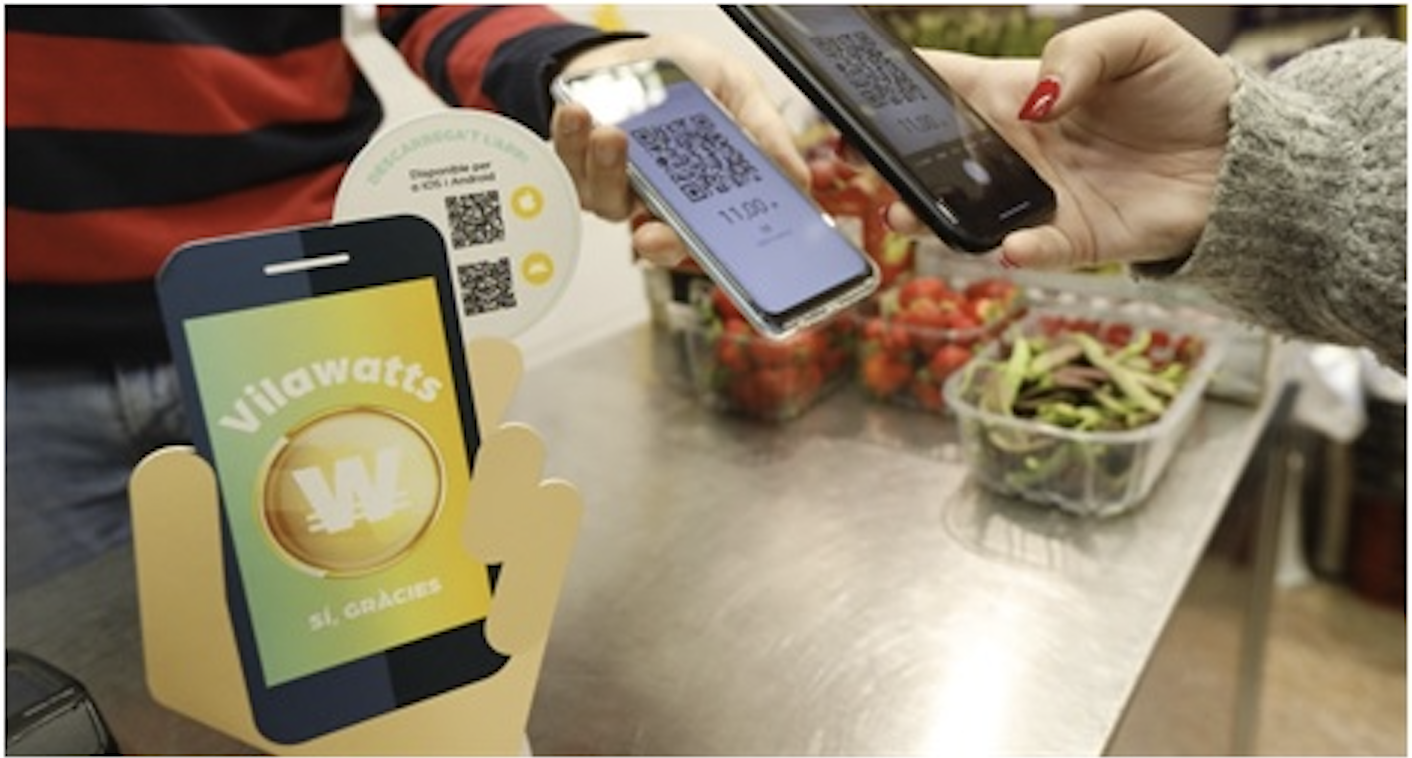Money talks: How Milan and other UIA cities are stimulating behaviour change using financial proxies.

How to change a mindset
Too many young people in Milan don’t take advantage of the wide range of facilities and services on offer through the public and community sectors. Often, those who could most benefit are the very ones who don’t access them. Why not? Sometimes they don’t know about them. Other times they can’t easily get to them. Sometimes, they can’t afford them.
The Milan UIA project, WISH-MI, aims to improve the wellbeing of children and young people in the city. It has established wellbeing pillars that cover every aspect of life, including Health, Social Relations and Education and Training. The strategic aim is to ensure that all young people in the city have the best life start and can achieve their potential.
WISH-MI will involve the wholesale redesign of services supporting young people. The co-design principle is also central to this, as the city will engage children, young people and families to improve their offer, and to rewire their relationship with its young citizens. This collaborative process will help shape a series of physical and digital hubs being rolled out across the city, commencing in spring 2022.
But how will the city reach youth who are out of the loop? What tools can help shift behaviours amongst those least likely to take advantage of what’s available?
One of the mechanisms the city will employ is a voucher scheme. This will target and incentive those highest up Milan’s priority list.
Vouchers are, of course, a proxy for money. In their digital state, people might be inclined to think about cryptocurrency and other fangled financial innovations. But that’s not where we are here, and in fact there is a long history of city authorities using such tools to stimulate behaviour change. Think for example of the Bristol Pound, designed to boost spending and B2B trading in the local economy.
By looking to vouchers, Milan is in good company with other UIA cities that have utilised digital finance variations to nudge behaviours and stimulate local level innovation.
Vilawatt: Digital currency and energy transition

Viladecans is a small Catalan city with big ideas. Many of its population of 66,875 citizens live in multiple-occupancy buildings with poor energy efficiency. Low-income neighborhoods in mixed ownership apartment blocks are notoriously difficult to engage in measures to address energy transition. Vilawatt, the Viladecans UIA project has successfully done this through an ambitious and innovative approach, which has included the retrofitting of a number of older apartment blocks, together with the implementation of a local digital currency.
In fact, Vilawatt claims a unique title: it is the only digital currency named after a UIA project!
The beneficiaries of the local energy retrofitting programme receive the value of their cost savings in Vilawatts, the local currency that has been designed to be legally based on the Euro. One Vilawatt (1₩) is backed by one Euro (1€) in the form of electronic money, a legal form of digital money in the eurozone. Deploying a local currency under this legal framework clears the way for its wide adoption. With the supervision and backing of the European Central Bank (ECB), both public & private entities can use the Vilawatt currency without limits or legal reservations.
All members can then spend their Vilawatts within the local economy, on businesses and services provided by participating businesses in the community. Later in 2022 they can also use their Vilawatts to pay for municipal taxes and services.
Citizens can access the digital currency by using the Vilawatt app, created by UBIQUAT, the technological partner of the UIA project using Cyclos (banking software). The platform validates and records trades, allows detailed accountability for special programs (like the "Bons Vilawatt" coupons campaign) and allows users to convert funds between euros and Vilawatts at any time.
The next steps of Vilawatt/vCITY will include the deployment of Self-sovereign Identity (SSI) aligned with the new european identity standard, link with local sustainable tokens (recycling, health...) and smart payments sensitive to the user's digital identity and credentials. The platform is also based on open standards, extensible to new cities and most of it will soon be open source.
The objectives of the digital currency were to:
- Stimulate the local economy: the multiplier effect of local currencies is well-documented
- Raise the awareness of positive energy transition and its potential benefits
- Promote social solidarity, based on generating public value from energy efficiency
Local citizens and businesses are using Vilawatts. Over 3,500 citizens use it and over 400 local businesses accept it from their customers. Although the UIA project is now complete, Viladecans continues this work, including the currency, and is participating in a pilot programme with URBACT to transfer its energy transition model to three other European cities.
Rotterdam RIKX: creating a platform for social return on investment

Rotterdam’s financial innovation journey has taken another route. As part of the UIA BRIDGE project, the city started exploring fresh ways to fund projects with social impact. Rotterdam was already a pioneer of social innovation, for example as the first city outside the US and the UK to deliver Social Impact Bonds (SIBs). Rotterdam also had a sophisticated, social return on investment (SROI) mechanism whereby businesses with large public contracts made commitments to support social objectives.
Research around financial sustainability for BRIDGE contributed to the idea of a social coin - a mechanism to improve the link between social investors and the eventual social impact. Fast forward two years and the result is RIKX, a marketplace for social outcomes, that connects businesses, philanthropists and social entrepreneurs. The big leap forward is that investors get a clear picture of the social impact their funds create. This development addressed an identified weakness in the original SROI funding model, where contributing businesses did not know where their contribution ended up - or the value of its return.
With the RIKX framework, local projects apply to participate in the model. Their impact is evaluated, allowing a monetary value to be assigned to their outcomes. Businesses with an SROI obligation, philanthropists and social impact investors now have a clear idea of where their money goes. Funding is directly linked to impact, not activities, and effective social enterprise projects are financially supported for transforming lives.
Like Vilawatt, RIKX is in its early stages after extensive development activity. The model has already supported a small cohort of 5 projects with encouraging results. It has also recently been announced as one of the winners of the 2021 Bloomberg Mayors Challenge.
Milan’s venture into vouchers
Back in Milan, the UIA team are putting the finishing touches to the specification for their voucher system. The city has adopted this approach as part of plans to re-engineer traditional welfare models, where end users often have little choice over the service offer. Milan sees vouchers as as a mechanism to empower children, young people and families through giving them choice and control.
Priority will be given to the most socially and economically vulnerable families. Other criteria are being developed, for example relating to household size and composition with specific households (e.g. single parents, larger families, children with disabilities) given preference. However, the service offer will be open to all of the 230,000 Milanese families with minors, who will also benefit from this service restructure.
The system comprises individual and collective vouchers. Both are digital, with the latter being used to finance customised local projects co-designed with children, youth and families. Individuals can use their vouchers to access services under five categories (Arts, Health, Education, Sport and STEM) based around WISH-MI”s youth wellbeing pillars. A digital catalogue, scheduled to go live in April 2022, will contain details of the entire menu of available services. These can be accessed both on the WISH-MI digital platform, as well as via the network of WISH-MI hubs, being rolled out from spring 2022.
The city will use a wide range of digital and physical channels to promote the concept and engage its target audience. Social services, schools and education agencies will be involved, as well as the WISH-MI hubs and community networks. Local micro-analysis and outreach activity has been under way for some months in the initial hub neighbourhoods, and between January and July 2022, more than 100 professionals are being trained as WISH-MI ambassadors, embedded within the local communities.
All of this represents a major shift in the city’s support framework for its young people. It means that 2022 should be a big year for Milan’s youth.
About this resource
The Urban Innovative Actions (UIA) is a European Union initiative that provided funding to urban areas across Europe to test new and unproven solutions to urban challenges. The initiative had a total ERDF budget of €372 million for 2014-2020.
Similar content




